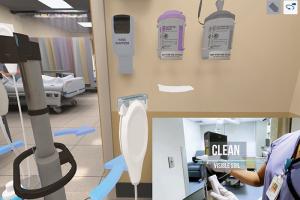Hospitals test limits of digital signage to improve patient experience
Hospital wayfinding is moving beyond a few simple, but helpful, colored stripes lining corridors to help patients, visitors and even staff find their way through intricate layouts. Today’s solutions have moved onto wall screens, kiosks and even smartphones as people navigate their way through health care facility halls.
“Digital wayfinding is gaining a lot of traction due to the numerous pain points it addresses. For one, the navigational assistance provided is comprehensive,” explains Preeti Dhindsa, marketing manager, Mvix (USA) Inc., Sterling, Va. “A network of digital directories informs; interactive kiosks orient and guide; and check-in kiosks enable visitors to access appointment and billing information.”
The multifunction nature of digital signage is probably the No. 1 benefit to hospitals when they take wayfinding into the virtual world. Not only can it assist patients in finding their way around the hospital, but digital signage also can provide information about their health, update them on events within the facility and provide entertainment.
Nationwide Children’s Hospital, Columbus, Ohio, states that the ability to easily switch out information on digital boards allows it to keep messages current. Florida Hospital Wesley Chapel displays nature photos on screens to create a calming atmosphere in its hospital chapel. View our slideshow to see other examples of how hospitals use digital signage.
But while digital signage is making inroads as a regular fixture in health care settings, Michael Herweyer, vice president of technical sales, 2/90 Sign Systems, Grand Rapids, Mich., says the technology’s potential is far from being tapped out.
“Digital signage is becoming ubiquitous in health care,” he says. “One of the key aspects is wayfinding and, while the technology is advancing quickly, it is not yet mature. The use of beacons or a similar technology to provide ‘indoor GPS’ directions, such as Google maps, exists but is rarely implemented, primarily due to cost.”




